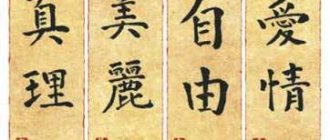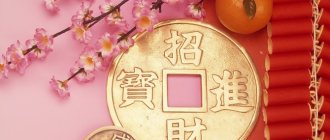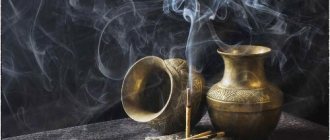| Calendar | |||
| Calendar information | |||
| Calendar type | Lunisolar | ||
| Other calendars | |||
| Armelina · Armenian: Old Armenian, Christian · Assyrian · Aztec · Bahai · Bengali · Buddhist · Babylonian · Byzantine · East Slavic · Vietnamese · Gilburda · Holocene · Gregorian · Georgian · Dari · Ancient Greek · Ancient Egyptian · Ancient Indian · Ancient Persian · Ancient Slavic · Hebrew · Zoroastrian · Indian · Inca · Iranian · Irish · Islamic · Celtic · Chinese · Conta · Coptic · Malay · Maya · Masonic · Mingo · Nepalese · New Julian · Proleptic: Julian, Gregorian · Roman · Rumic · Symmetrical · Soviet · Stable · Tamil · Thai: lunar, solar · Tibetan · Triseasonal · Tuvan · Turkmen · French · Khakassian · Canaanite · Harappan · Juche · Swedish · Sumerian · Ethiopian · Julian · Javanese · Japanese | |||
Chinese calendar
represented by two types of calendars:
solar
(agricultural) and
solar-lunar
.
The second of them is historically known in two versions: the Xia
(named after the first semi-mythical dynasty 夏), the most popular in East Asia, counting the year in spring; as well as the Zhuan [zh] calendar, named after the ancestor of the Qin dynasty Zhuan-xu, which counts the year in autumn (see below Qin Dynasty Calendar).
In modern China, the Gregorian calendar has also come into use, but the lunar calendar, as before, is widely used to determine the dates of traditional holidays: “Spring Festival” (Chinese New Year), Mid-Autumn Festival and others, and to determine the start dates of certain types of agricultural work. “Spring Festival” (New Year) according to the lunar calendar is variable and falls annually on the day of the “First New Moon”. The beginning of the new year is recognized as the second new moon, counting from the winter solstice (December 21-22), which from 1645 to 2644 occurs no earlier than January 21 and no later than February 21 [1] (for example, 4715 year of the yellow dog from February 16, 2020 until February 4, 2020). Xia calendar
The “Beginning of Spring” falls annually on the 4th, 5th or 6th of February.
Xia
calendar is used for romantic purposes, for example, when choosing the most favorable days for weddings, opening of institutions, and
any
other events.
The personal “fate card” of Ming Shu
命书 is also calculated using the
Xia
.
In China, the Gregorian calendar is called the "standard" (公曆 gōnglì), "Western" (西曆 xīlì) or "solar" (日曆 rìlì) calendar. After the introduction of the Gregorian calendar, it was also called the new calendar, and the lunar calendar, accordingly, was called the old calendar.
Content
- 1 History 1.1 Shang calendar
- 1.2 Zhou era calendars
- 1.3 Qin Dynasty calendar
- 1.4 Han calendars
- 4.1 Calculation of the cycle number by year of the Gregorian calendar
- 6.1 First two digits of the year: 19
The lunar calendar is the order of time reckoning in China and has its roots in ancient times. As follows from the oldest records, the basics of the lunar calendar were known to the ancestors of the Chinese already in the middle of the 2nd millennium BC. e. The final design of the Chinese lunar calendar system dates back to the Han era (2nd century BC - 2nd century AD), which then became established and was used until the 20th century.
In China, as in other agrarian civilizations of the ancient world, the formation of the lunar calendar was closely related to the economic needs of the agricultural population. The Chinese character for “time” (shi), which is found already in the most ancient texts, graphically expresses the idea of seeds in the ground growing under the sun. And later, the concept of time in China never lost touch with the idea of qualitative stage-by-stage, natural duration inherent in the life process.
- The lunar calendar is a calendar of lunar days that is based on the lunar cycle.
- Lunar days add up to a lunar month. Lunar months are in lunar years. etc.
- Lunar day is the period of time between two moonrises. Almost always. Exceptions are the first lunar day. They are counted from the new moon. And the last ones. They end with it.
- A lunar day is the same as a lunar day (see just above).
- Lunar horoscope - a brief description of the lunar day. An attempt by people to compare various internal and external events with lunar rhythms. You can judge the success of this attempt.
- The symbol of the lunar day is a figurative characteristic of the lunar day. This is probably the oldest information on the lunar calendar that has reached us. Symbols are interpreted. They meditate on them, etc.
Muslim (Islamic) lunar calendar
The beginning of each month of the Muslim calendar is determined by the lunar cycles, i.e. the beginning of a new quarter is the beginning of a new month. The lunar month lasts from the appearance of one new month to the next, i.e. 29 days 12 hours 44 minutes 3.8 seconds, so some months have 29 days and others 30. Additional days of the month are prohibited, except for the only day that serves to keep the new moon close to the 1st of the month. This day is included in the month of Dhul-Hijjah.
Twelve lunar months make up a lunar year, which, according to the most approximate calculations, is equal to 354 days. And since the true length of the lunar month is not 29.5 days, but somewhat longer, then the length of the lunar year is not 354 days, but 354.367. Since this is not an integer, the problem of leap years inevitably arises, that is, the alternation of simple years containing 354 days and extended years - 355 days each.
The cycle consists of 30 years: 19 ordinary years of 354 days and 11 leap years of 355 days. Leap years 2, 5, 7, 10, 13, 16,18, 21, 24, 26, 29. An additional day is added to the last month. The Muslim year is always shorter than the solar year: by 10 days if the Muslim year is a leap year and the solar year is a simple one; by 11 days if both years are simple or leap years; and even for 12 days if the Muslim year is simple and the solar year is a leap year.
The Muslim year is not tied to seasons, the months migrate across all seasons, with the result that the beginning of the year, for example, may fall in the Gregorian summer months, and after some time - in the winter.
Chinese lunar calendar
The Chinese calendar is a desire to harmoniously combine the rhythms of the moon and the sun. Even in ancient times, Chinese astronomers learned to calculate with great accuracy the movement of the moon in connection with the movement of the sun and the position of the stars. But the significance of the traditional lunisolar calendar of China was not limited to the field of astronomical knowledge. In the process of its formation, the Chinese calendar reflected and synthesized the most diverse aspects of the life and culture of the Chinese, becoming one of the brightest embodiments of the fundamental idea in the Chinese tradition of the organic unity of the basic elements of the universe: Heaven, Earth, Man.
The Chinese have long discovered the ecliptic of the sun and, like many other ancient peoples from Europe to America, they distinguished 12 zodiacal constellations, each of which corresponded to the movement of the sun across the celestial sphere by 30?. The twelve signs of the Zodiac are named after the animals of the 12-year “animal cycle”, widespread throughout East Asia: mouse, ox, tiger, hare, dragon, snake, horse, sheep, monkey, chicken, dog, pig. Half of the signs (namely the signs of the tiger, dragon, horse, sheep, chicken and snake) were associated with the light, or masculine, principle of yang, the other half - with the dark, or feminine, principle of yin. In addition, since the Han era, it became a custom to divide each of the 12 parts of the Zodiac into two, distinguishing 24 “seasons” in the year, corresponding to the seasonal rhythm of natural phenomena.
Mayan lunar calendar
It is currently believed that the Mayan culture began somewhere around 1500 BC. e. According to Morley, the history of the Maya people can be divided into three stages: Preclassic, which lasted from 1500 BC. e. to 300 AD e., classical, occupying a place from 300 to 900. AD, and post-classical - 900 - 1530 AD. e. Mayan science reached its peak during the classical period.
One of the most interesting and mysterious gifts of the ancient Mayans to modern civilization is a calendar.
The Mayan Indians have all disappeared somewhere. For a long time - more than a thousand years ago. Since then, no one has seen them and it is not even known why they disappeared. Some historians claim that civilization was destroyed by civil strife, others - that the Mayans died as a result of some natural disasters. And they left us their beautiful stone pyramids and fortresses, their writing, impressive knowledge of mathematics and astronomy for an ancient civilization. One of the most interesting and mysterious gifts of these ancient Indians to modern civilization is the Mayan calendar. Mayan calendar systems
The Mayans had two calendar systems. One calendar - often called civil - was used for household needs. The Mayans used it to determine when to sow corn, when to harvest and do other household chores. The year of the Mayan civil calendar - “Haab” - had 365 days, i.e. was coordinated with the solar cycle, which is very useful for agriculture. It consisted of 18 months of 20 days and another 5 days, called “days without a name” and considered fatal. The priests knew that the haab was a fraction of a day shorter than the true solar year and made adjustments.
In addition, there was a ritual calendar - “Tzolkin”. The Mayan priests used the Tzolkin to determine when to perform religious ceremonies. Including the most terrible ones - their famous sacrifices. The Tzolkin year was much shorter - only 260 days - and was divided into 13 months, which, like the Haab, each contained 20 days. During the 52nd year of the Haab calendar, there are 73 whole tzolkin. This dependence formed the basis of the harmony of the Mayan calendar.
Many Mayan experts claim that these ancient Indians knew very well the structure of the Universe. This allowed them to predict that on December 21, 2012, global events would occur on Earth that would dramatically change the course of history. The details of this message have not reached us, and researchers are still trying to figure out what the smart Indians meant. Many are inclined to believe that this is how the Mayans predicted the “end of the world.” Others believe that a new era will come on Earth, an era of spiritual insight. What do our astronomers say?
First of all, this is the time of the winter solstice. But this happens every year - it doesn’t seem like a good idea for a space revolution. But besides this, on December 21, 2012, our Earth and the Sun will be in line with the center of our Galaxy. But this is already impressive. Imagine, the Mayans predicted such a non-trivial cosmic phenomenon more than a thousand years ago! But they didn’t even have lenses or telescopes. They carried out their observations of stars and planets using narrow slits. What this astronomical event promises us, modern scientists do not know. As they say, wait and see.
13 Moon Calendar
The Mexican writer, artist and mystic Jose Arguelles, having studied the Mayan heritage, created an entire spiritual teaching. Argüelles argues that we modern humans live in mechanistic time. What does he mean?
The year of the Gregorian calendar, according to which almost the whole world now lives, consists of months of different sizes: sometimes 30, sometimes 31, sometimes 28 days. This sequence of numbers was chosen arbitrarily by a person and is in no way consistent with natural rhythms. In addition, a person divides the clock dial into 12 parts, and an hour into 60 minutes. And people also took these numbers as if from nowhere. Jose believes that living in this artificial time, a person loses touch with nature, with the cosmos, and forgets his highest values. And a civilization that has lost contact with its native biosphere enters a phase of self-destruction.
A month of the 13-moon calendar consists of 28 days, and this, as is known, is the lunar cycle, with which many natural and biological processes are consistent. These are, for example, ocean tides and the menstrual cycle in women.
Using the Tzolkin and a certain calculation technique, based on the date of his birth, a person can determine his inclinations, strengths of his personality and receive some kind of personal message about his life.
This calendar is a way to return a person to natural time, to the rhythms that exist in nature. The fact is that our galactic center emits pulses of energy that carries certain qualities. The period of this radiation is 260 days. On each day, certain characteristics are emitted, a certain information message, which is repeated exactly 260 days later. We may not know this and arrive in the state in which we are. Unfortunately, humanity has come up with mechanical watches that do not measure true time. They convey the character of the time we have invented. Look: the arrow runs from one point to another, and we consider this a certain time. This is a dimension of space, not time. This is something conditional. But since we accepted this as truth for ourselves, we live this truth. But this is the truth in quotation marks. The present tense is a natural tense. And if a person knows about this and tries to tune in with it, consciously, using his consciousness, then he will turn out to be harmonious.
Jewish lunar calendar
This is a solar-lunar calendar. The month, just like among the Arabs, begins with the new Moon. The day begins at sunset or at the moment when certain three stars are visible or (this is just a song!) “depending on religious circumstances.”
The chronology begins from 3761 BC, that is, from the very moment of the creation of the world. There are 4 ways to calculate the first day of the new year: 1 - from the day of the creation of the world; 2 - from the day when tithes are paid for fruit trees; 3 - from the day when tithes are paid for domestic animals; 4 - from the so-called “New Year of the Kings” - a holiday in the 6th or 7th month. In the latter case, this month in the middle of the year becomes the first.
Aztec lunar calendar
The Aztec circular calendar became a worldwide symbol not only of their lost civilization, but of Mexico as a whole. Many have seen the image of a round stone calendar, which is now carefully kept in the museum, but few people know the Aztec stone calendar, where the year consists of 18 months of 20 days each, very weighing - 24 tons
It is curious that with the help of this stone disk it was also possible to determine the time of day - by the shadows cast by sticks stuck into special holes. The Aztec month consisted of 20 days, and the year consisted of 18 months, which gives a total of 360 days, plus 5 “unlucky” days (just like the Romans). There are 5 days in a week. And the Aztecs considered time in 52-year cycles.
See also Avestan lunar calendar
Return to section: Astrology
Information
▲
() Random practice: Program - Awakening genetic memory Currently online on the site:
110 people. | Public offer | Your Yoga on social networks
Story
Shang era calendar
Chinese calendar page
The oldest inscriptions on the oracle bones of the Shang era (XVI-XI centuries BC) describe a year of 12 lunar months, in which empirical insertions of the thirteenth and sometimes even the fourteenth months were carried out in order to avoid the calendar from slipping and maintain its connection to the seasons and solstices. Even then, a sixty-year cycle was used to count years and days. Tradition holds that the year began with the first new moon after the winter solstice.
Zhou era calendars
Early texts from the Zhou era (11th to 3rd centuries BC), such as Chunqiu
, describe a year of 12 lunar months in which the insertion of a thirteenth month is carried out at the end of the year for empirical reasons. The length of the months alternates between 29 and 30 days, and an extra day is sometimes added at the end of the month to ensure that the beginning of the month corresponds to the observed new moon.
The element of arbitrariness in the choice of additional days and months led to the fact that the calendars of different kingdoms could differ slightly, but the calendar of the Zhou kingdom was considered the official calendar.
The beginning of the year was pushed back a month, and was already considered the new moon before the winter solstice.
Nevertheless, the annals of Chunqiu indicate that the beginning of the new year after the winter solstice, as was the case in the Shang era, was still used in some places (at least in the kingdom of Lu) even in the 7th century BC. e., and the shift of the beginning of the year by a month back is estimated at 650 BC. uh..
Qin Dynasty Calendar
In 221 BC. BC, when Emperor Qin Shi Huang unified China, he carried out a calendar reform and established a single calendar. Due to considerations of the dominance of the elements, the beginning of the year was moved forward another month, to the second new moon before the winter solstice (the end of the tenth moon).
During the Qin Dynasty, 24 seasons were introduced, determined by the position of the sun on the ecliptic (similar to the 12 signs of the zodiac), which became the basis of the agricultural calendar. The seasons were not directly related to the movement of the moon.
Han calendars
- Taichu
The Chinese calendar, close to the modern one, was approved by decree of Emperor Wu Ti of the Han Dynasty in 104 BC. e. As a result of many years of work by Confucian scholars, Sima Qian also participated in the project.[2] The calendar was named Taichu (太初, Great Beginning), and the new era of Wu-di's reign was also named. According to this calendar, the beginning of the year moved to the beginning of spring (the third cyclic sign of the Yin tiger), which corresponds to the new moon at the end of January - beginning of February, and an additional lunar month was introduced when the sun did not cross the boundaries of the corresponding sector of the ecliptic for the entire month (coinciding with the “zodiac sign” , or rather two agricultural seasons), the beginnings of months (new moons) were calculated from the average movement of the sun and moon.
- Santong Li
三统历
Developed by a commission headed by Liu Xin as one of the important reformist steps of Wang Mang (9 - 23 AD). Uses numerological principles along with astronomical ones.
- Han Li
Eastern Han calendar correcting santongli
. Adopted in 85 AD. e.
- Qianxiang Li
乾象历
Calendar reform project proposed by Liu Hong 刘洪 (c. 135–210): adopted by one of the kingdoms formed after the fall of Han in 220.
Jianchu: Establishment
The success of your business largely depends on how your plans relate to the rhythms of nature.
As early as the second century BC, soothsayers of the early Han Dynasty noticed the different properties of days and created a unique cyclic system of 12 indicators of luck. They were called Jianchu (after the names of the first two characters). You can also find other names: 12 day managers, 12 day officials.
Following the instructions of Jianchu is an important requirement when choosing an auspicious date.
You should not divide these days into “bad” and “good” only based on their names. A person does many different things (and also cleans the stables) and it is important to correctly correlate the type of energy of the task with the type of energy of the day so that what is planned is realized in the best possible way.
Today - on the day of Establishment - I will begin to introduce you in order to each of the daytime rulers.
The description of the indicators will include a translation of an ancient Chinese text from the book by Andrey Kostenko and Igor Petushkov “Chinese Calendar for 100 Years” and modern interpretations of useful and not so useful things to do on this day.
Please note that some things that seem to be the same are separated by the Chinese and therefore attributed to days with different indicators or in the same day, but to its positive or negative properties. For example, engagement and wedding, groundbreaking and construction. Be careful. And try to understand and accept the logic of reasoning of the Chinese masters.
Indicator 1.
Jian – Creation, Establishment.
On this day 10 thousand things are born. Paying bills, bartering and trading, traveling, erecting pillars - all these things will be extremely successful. Avoid digging, traveling on water, opening warehouses and treasuries.
In former times, on the day of Establishment, the emperor offered prayers for a rich harvest.
A great day for planning, taking up a position, visiting friends, negotiations, marriage proposal or engagement, starting treatment or training, moving. Good for risky monetary transactions, commercial transactions, purchases, sales, short business trips. Construction can begin.
You should not make long journeys by sea or air, lay foundations (this does not apply to construction among the Chinese) or work in the garden, or move heavy objects. It is not advisable to open a store on this day, start sorting out accounting or auditing cash and food supplies. Bad for weddings, destruction of old buildings, funerals.
PS The earthly branch of the day of Creation always coincides with the earthly branch of the current month.
Irina Makovetskaya,
Your guide to a world where dreams come true
Options
Other eastern calendars are either completely identical to the Chinese (Korean), or are in many ways similar to the Chinese, but have some differences (Vietnamese - the Rabbit in the zodiac cycle is replaced by the Cat; Tibetan - the names of animals according to the Zodiac are slightly changed; Japanese - the calculation principle is changed, due to what causes discrepancies in years compared to other calendars).
Thanks to the Mongol conquests, elements of the Chinese (Sino-Uighur) calendar became the property of Islamic peoples. In particular, the names of animals, translated from Mongolian into Turkish, began to be used to maintain chronological records, official and historical documents in the territories of the distribution of the Persian and Turkish languages from Asia Minor to India, from the Middle Ages to modern times. In Iran, the lunar calendar was used by peasants and tax collectors until its use was banned in 1925.
Rabbit.
People born in the year of the Rabbit tend to be very sensitive and are usually on their guard. These seemingly soft and sensitive creatures have a rich emotional life. Their mood is unstable and changes frequently.
They demonstrate a high level of intelligence, along with amazing (sometimes excessive) honesty. Their thoughts flow at a very high speed. Therefore, Rabbits are able to implement a wide range of tasks in a surprisingly short time. Their speed and intelligence are highly valued in the modern world.
Those born under the sign of the Rabbit always look to the future, think ahead, identifying possible obstacles and calculating the degree of risk. If one approach does not work in the current situation, then the Rabbit will immediately have a replacement ready. They will continue to try until they find a way out of a seemingly hopeless situation.
Rabbits don't like to waste time and have a hard time understanding why others aren't as smart as themselves. In this regard, others may mistake their impatience for contempt.
But what at first glance seems like a weakness, for Rabbits becomes a priceless gift from Heaven. In any situation where you need to be on guard, where you need lightning speed to search for alternative approaches and scenarios for the development of events, Colic becomes indispensable. That is why they are always gladly accepted into business teams.
Chinese agricultural calendar
This calendar determines the division of the year into 24 agricultural seasons according to the position of the Sun on the ecliptic. The seasons have nothing to do with the movement of the Moon.
| Ecliptic longitude | Translation | Chinese name[3] | Japanese name | Korean name | Vietnamese name | Approximate date in the Gregorian calendar[3] |
| 315° | The beginning of spring | 立春 lichun | 立春 Rissyun | 입춘 (立春) ipchun | Lập xuân lap xuan | February 4-5 |
| 330° | Rainwater | 雨水 yushui | 雨水 wusui | 우수 (雨水) wusu | Vũ thủy vu thủy | February 19-20 |
| 345° | It's time for the larvae to awaken | 驚蟄 (惊蛰) jingzhe | 啓蟄 keititsu | 경칩 (驚蟄) gyongchhip | Kinh trập kinh chap | March 5-6 |
| 0° | The vernal equinox | 春分 chunfen | 春分 shumbun | 춘분 (春分) chungbun | Xuân phan xuan fan | March 20-21 |
| 15° | Clear and light | 清明 qingming | 清明 seimei | 청명 (清明) cheongmyeon | Thanh minh thanh minh | April 4-5 |
| 30° | Bread showers | 穀雨 (谷雨) guiyu | 穀雨 koku: | 곡우 (穀雨) kogu | Cốc vũ coc vu | April 20-21 |
| 45° | Early summer | 立夏 fox | 立夏 rikka | 입하 (立夏) ipa | Lập hạ lap ha | May 5-6 |
| 60° | Small abundance | 小滿 (小满) xiaoman | 小満 sho:man | 소만 (小滿) soman | Tiểu mãn tiểu man | May 21-22 |
| 75° | Earing corn | 芒種 (芒种) manzhong | 芒種 bo: shu | 망종 (芒種) manjeong | Mang chủng mang tyung | June 5-6 |
| 90° | Summer solstice | 夏至 xiazhi | 夏至 Geshi | 하지 (夏至)haji | Hạ chí ha ti | June 21-22 |
| 105° | Low heat | 小暑 xiaoshu | 小暑 sho: sho | 소서 (小暑) soso | Tiểu thử tiể thi | July 7-8 |
| 120° | Great heat | I will give it to you | 大暑 Taisho | 대서 (大暑) daeso | Đại thử dai thi | July 23-24 |
| 135° | Beginning of autumn | 立秋 Liciu | 立秋 risshu: | 입추 (立秋) iphu | Lập thu lap thu | August 7-8 |
| 150° | Stopping the heat | 處暑 (处暑) nonsense | 処暑 shōsho | 처서 (處暑) chhoso | Xử thử si thi | August 23-24 |
| 165° | White Dew | 白露 bailu | 白露 Hakuro | 백로 (白露) pekkhro | Bạch lộ bat lo | September 7-8 |
| 180° | Autumn equinox | 秋分 qufen | 秋分 shu: bun | 추분 (秋分) chupun | Thu phan thu phan | September 23-24 |
| 195° | Cold dew | 寒露 hanlu | 寒露 kanro | 한로 (寒露) hallo | Hàn lộ han lo | October 8-9 |
| 210° | Frost formation | 霜降 shuangjiang | 霜降 so: ko: | 상강 (霜降) san'gan | Sương giáng suong giang | October 23-24 |
| 225° | Early winter | 立冬 lidong | 立冬 ritto: | 입동 (立冬) ipdong | Lập đông lap dong | November 7-8 |
| 240° | Small snow | 小雪 xiaoxue | 小雪 sho: setsu | 소설 (小雪) salt | Tiểu tuyết tiểu tuet | November 22-23 |
| 255° | Big snow | 大雪 daxue | Taisetsu | 대설 (大雪) daesol | Đại tuyết give tuet | December 7-8 |
| 270° | Winter solstice | 冬至 dongzhi | 冬至 then: ji | 동지 (冬至) donji | Đông chí dong ti | December 21-22 |
| 285° | Small cold | 小寒 xiaohan | 小寒 sho:kan | 소한 (小寒) sohan | Tiểu hàn tiểu hàn | January 5-6 |
| 300° | Big cold | 大寒dahan | 大寒 daikan | 대한 (大寒) daehan | Đại hàn dai han | January 20-21 |
Chinese cyclical calendar
The Chinese cyclical calendar uses a sixty-year cycle. It is a combination of cycles of 10 years (“heavenly trunks”) and 12 years (“earthly branches”). The least common multiple of 10 and 12 is 60, so half of the combinations (those with different parities) are not used, and the calendar cycle repeats after 60 years.
Animal bones and turtle shells with 60-year cycle signs carved on them were found, which date back to the Shan-Yin era (1766-1122 BC). The beginning of such a cyclic count is taken to be 2397 (according to other sources - 2697) BC. e.[4] When using the beginning of the cycle 2697 BC. e. The year is now 4715 (from February 16, 2020 to February 4, 2020).
In addition to the calendar, these cycles have other meanings in Chinese culture, some are mentioned in the table below.
The year in the cycle is indicated by two hieroglyphs, [celestial trunk][earthly branch]. Sometimes only the “earthly branch” is indicated.
The beginning of the year in the calendar depends on an astronomical phenomenon (new moon), and not on a date in the Gregorian calendar.
Therefore, due to the extent of the territory in which the calendar was used, in different places the New Year could be celebrated on different (±1) days of the Gregorian calendar. Accordingly, the data on the New Year's date in the tables below have the same accuracy (unless it is specified for which time zone the calculations were made). Sexagenary cycle (干支)
Beginnings of the years of the Chinese calendar according to the Gregorian calendar[1][5]
| Hieroglyphs of the year in the 2nd\1st cycle | Heavenly trunks | Chinese zodiac | Times of Day | |||||||||||
| tree 木 mù | fire 火 huŏ | earth 土 tŭ | metal 金 jīn | water | ||||||||||
| 甲 jiă | 乙 yĭ | 丙bĭng | 丁dīng | 戊wù | 己 jĭ | 庚 gēng | 辛 xīn | ren | 癸guĭ | |||||
| 1 | 2 | 3 | 4 | 5 | 6 | 7 | 8 | 9 | 10 | |||||
| EARTH BRANCHES | 子zĭ | I | 1 05.02.1924 02.02.1984 | 13 24.01.1936 19.02.1996 | 25 10.02.1948 07.02.2008 | 37 28.01.1960 25.01.2020 | 49 15.02.1972 11.02.2032 | rat 鼠 shŭ | 23…1 | |||||
| 丑 chŏu | II | 2 24.01.1925 20.02.1985 | 14 11.02.1937 07.02.1997 | 26 29.01.1949 26.01.2009 | 38 15.02.1961 12.02.2021 | 50 03.02.1973 31.01.2033 | bull | 1…3 | ||||||
| 寅yin | III | 51 23.01.1974 19.02.2034 | 3 13.02.1926 09.02.1986 | 15 31.01.1938 28.01.1998 | 27 17.02.1950 14.02.2010 | 39 05.02.1962 01.02.2022 | tiger 虎 hŭ | 3…5 | ||||||
| 卯măo | IV | 52 11.02.1975 08.02.2035 | 4 02.02.1927 29.01.1987 | 16 19.02.1939 16.02.1999 | 28 06.02.1951 03.02.2011 | 40 25.01.1963 22.01.2023 | rabbit 兔 tù | 5…7 | ||||||
| 辰chen | V | 41 13.02.1964 10.02.2024 | 53 31.01.1976 28.01.2036 | 5 23.01.1928 17.02.1988 | 17 08.02.1940 05.02.2000 | 29 27.01.1952 23.01.2012 | dragon 龍 long | 7…9 | ||||||
| 巳 sì | VI | 42 02.02.1965 29.01.2025 | 54 18.02.1977 15.02.2037 | 6 10.02.1929 06.02.1989 | 18 27.01.1941 24.01.2001 | 30 14.02.1953 10.02.2013 | snake | 9…11 | ||||||
| 午 wŭ | VII | 31 03.02.1954 31.01.2014 | 43 21.01.1966 17.02.2026 | 55 07.02.1978 04.02.2038 | 7 30.01.1930 27.01.1990 | 19 15.02.1942 12.02.2002 | horse | 11…13 | ||||||
| 未 wèi | VIII | 32 24.01.1955 19.02.2015 | 44 09.02.1967 06.02.2027 | 56 28.01.1979 24.01.2039 | 8 17.02.1931 15.02.1991 | 20 05.02.1943 01.02.2003 | sheep | 13…15 | ||||||
| 申shēn | IX | 21 25.01.1944 22.01.2004 | 33 12.02.1956 08.02.2016 | 45 30.01.1968 26.01.2028 | 57 16.02.1980 12.02.2040 | 9 06.02.1932 04.02.1992 | monkey 猴 hóu | 15…17 | ||||||
| 酉 yŏu | X | 22 13.02.1945 09.02.2005 | 34 31.01.1957 28.01.2017 | 46 17.02.1969 13.02.2029 | 58 05.02.1981 01.02.2041 | 10 26.01.1933 23.01.1993 | rooster | 17…19 | ||||||
| 戌xū | XI | 11 14.02.1934 10.02.1994 | 23 02.02.1946 29.01.2006 | 35 18.02.1958 16.02.2018 | 47 06.02.1970 03.02.2030 | 59 25.01.1982 22.01.2042 | dog 狗 gŏu | 19…21 | ||||||
| 亥hai | XII | 12 04.02.1935 31.01.1995 | 24 22.01.1947 18.02.2007 | 36 08.02.1959 05.02.2019 | 48 27.01.1971 23.01.2031 | 60 13.02.1983 10.02.2043 | pig 猪 zhū | 21…23 | ||||||
| Matches: | green, blue | red | yellow | white | blue, black | -color | ||||||||
| Jupiter | Mars | Saturn | Venus | Mercury | -planet | |||||||||
| spring | summer | The end of the summer | autumn | winter | -season | |||||||||
| East | south | middle | west | north | -side of the world | |||||||||
Calculation of the cycle number by year of the Gregorian calendar
- Modern way:[4]
2006 年 − 3
=
60
× 33 + 23; 2006 ≈ 34th cycle, 23rd year
- Traditional way:[4]
2006 年 + 2397
=
60
× 73 + 23; 2006 ≈ 74th cycle, 23rd year
- A very ancient way:[4]
2006 年 + 2697
=
60
× 78 + 23; 2006 ≈ 79th cycle, 23rd year
- Another way:[6]
2006 年 + 2637
=
60
× 77 + 23; 2006 ≈ 78th cycle, 23rd year
Simplified table of correspondence between years (1888...2067) and branches
| Wood (turquoise, green) | Fire (red) | Earth (yellow) | Metal (white) | Water (black, blue) | |
| rat | 1924, 1984, 2044 | 1936, 1996, 2056 | 1888, 1948, 2008 | 1900, 1960, 2020 | 1912, 1972, 2032 |
| bull | 1925, 1985, 2045 | 1937, 1997, 2057 | 1889, 1949, 2009 | 1901, 1961, 2021 | 1913, 1973, 2033 |
| tiger | 1914, 1974, 2034 | 1926, 1986, 2046 | 1938, 1998, 2058 | 1890, 1950, 2010 | 1902, 1962, 2022 |
| rabbit | 1915, 1975, 2035 | 1927, 1987, 2047 | 1939, 1999, 2059 | 1891, 1951, 2011 | 1903, 1963, 2023 |
| the Dragon | 1904, 1964, 2024 | 1916, 1976, 2036 | 1928, 1988, 2048 | 1940, 2000, 2060 | 1892, 1952, 2012 |
| snake | 1905, 1965, 2025 | 1917, 1977, 2037 | 1929, 1989, 2049 | 1941, 2001, 2061 | 1893, 1953, 2013 |
| horse | 1894, 1954, 2014 | 1906, 1966, 2026 | 1918, 1978, 2038 | 1930, 1990, 2050 | 1942, 2002, 2062 |
| sheep | 1895, 1955, 2015 | 1907, 1967, 2027 | 1919, 1979, 2039 | 1931, 1991, 2051 | 1943, 2003, 2063 |
| monkey | 1944, 2004, 2064 | 1896, 1956, 2016 | 1908, 1968, 2028 | 1920, 1980, 2040 | 1932, 1992, 2052 |
| rooster | 1945, 2005, 2065 | 1897, 1957, 2017 | 1909, 1969, 2029 | 1921, 1981, 2041 | 1933, 1993, 2053 |
| dog | 1934, 1994, 2054 | 1946, 2006, 2066 | 1898, 1958, 2018 | 1910, 1970, 2030 | 1922, 1982, 2042 |
| pig | 1935, 1995, 2055 | 1947, 2007, 2067 | 1899, 1959, 2019 | 1911, 1971, 2031 | 1923, 1983, 2043 |
Custom version
Unlike the European calendar, the Chinese calendar not only counts the days, but also talks about their qualitative characteristics.
Each coming day and hour (as well as month and year) brings us special energy that favors some things and hinders others. This is reminiscent of natural phenomena - no one would think of sunbathing in the pouring rain or walking through the desert on a hot afternoon. The Chinese have long known this feature of time and when choosing a date for an important event, they always consult a special Almanac - Tongshu, which gives characteristics of each day and hour. The Chinese calendar and Tongshu almanac are presented on the website in two versions - custom and professional. To see the advanced version of the calendar, you need to click the “Professional version” checkbox.
The custom version of the calendar does not have hieroglyphs, which can be intimidating for beginners. On the month page you can see: the date, the number of the lunar day, green and red icons telling you what to do on this day and what not to do. Icons can be replaced with words by unchecking the “show with icons” checkbox.
You can also see the name of the Ruler of the Day (Jian Chu in Chinese). There are 12 rulers in total, they are also called Day Commanders, and with their help you can choose a favorable day for a particular business.
Characteristics such as Clash or Sha also tell us about the quality of the energies that the day brings us. As a rule, days with Collisions and Sha are not used for very important events, such as a wedding or opening a business.
Unfavorable influences usually “cross out” favorable ones. If, according to the Ruler, the day is suitable for medical procedures, but at the same time coincides with the sha of misfortune, you should not schedule a visit to the doctor for such a day.
You probably know what year you were born in according to the eastern horoscope. (If you don't already know, check out this Blog article on how to find out what year you were born). There are special days that are not suitable for you personally. Such days are also marked in our almanac. “Not suitable for the Ox” means that people born in the year of the Ox are better off not scheduling important events on such a day.
Take an interest in descriptions of days and hours or just look at the icons in order to do something important at the most favorable time! Important matters are marriage proposals, weddings, moving, buying valuables, negotiations, signing contracts, getting a job, opening a business, starting renovation or construction, laying a foundation, starting a diet, traveling, business trip, starting a new project, starting treatment or searching doctor, planning, starting training, resolving legal issues and court cases, debt collection, applying for a loan, resolving financial issues.
If you see a green icon indicating something to do, great, you can handle the task in the best possible way. Red - it’s better not to plan this activity, as problems of various kinds may arise. If you haven’t found the icon you need on the day, the situation is neutral, you can plan the business, but its implementation will not bring any special bonuses.
A detailed description of the day can be found on a separate page, which can be accessed by clicking on the day. There you can see for whom the day is favorable (by year of birth) and see the Flying Stars of the year and month.
Choosing an hour is no less important than choosing a day. There are very few ideal watches, therefore, focus on what kind of task you need to do and choose a watch that is suitable specifically for this event.
You may also notice that next to the watch descriptions there is an interval for that hour. The Chinese use two-hour clocks, which is a little unusual for Europeans. If you want to use the clock information correctly, you must set the local solar time. To do this, check the “local time” checkbox at the top of the page and select your city from the list. If you live in a very small city, choose the nearest settlement. After this, you need to click the “Apply” button. Now you will see descriptions of watches specifically for the place where you live.
The appearance of the calendar can be customized in the “Show/Hide” tab.
Chronological table of conversion of the first years of the 60-year cycle to centuries AD
| Century | First year of the cycle | Century | First year of the cycle | Century | First year of the cycle | Century | First year of the cycle | |||
| I | 04 64 | VIII | 724 784 | XV | 1444 | XXII | 2104 2164 | |||
| II | 124 184 | IX | 844 | XVI | 1504 1564 | XXIII | 2224 2284 | |||
| III | 244 | X | 904 964 | XVII | 1624 1684 | XXIV | 2344 | |||
| IV | 304 364 | XI | 1024 1084 | XVIII | 1744 | XXV | 2404 2464 | |||
| V | 424 484 | XII | 1144 | XIX | 1804 1864 | XXVI | 2524 2584 | |||
| VI | 544 | XIII | 1204 1264 | XX | 1924 1984 | |||||
| VII | 604 664 | XIV | 1324 1384 | XXI | 2044 |
Exact dates for the beginning of the year according to the lunar calendar
(dates are given in the format DD.MM.YY, the first 2 digits of the year are not indicated)
[5][7]
First two digits of the year: 19
| 31.01.00 | 19.02.01 | 08.02.02 | 29.01.03 | 16.02.04 | 04.02.05 | 25.01.06 | 13.02.07 | 02.02.08 | 22.01.09 |
| 10.02.10 | 30.01.11 | 18.02.12 | 06.02.13 | 26.01.14 | 14.02.15 | 03.02.16 | 23.01.17 | 11.02.18 | 01.02.19 |
| 20.02.20 | 08.02.21 | 28.01.22 | 16.02.23 | 05.02.24 | 24.01.25 | 13.02.26 | 02.02.27 | 23.01.28 | 10.02.29 |
| 30.01.30 | 17.02.31 | 06.02.32 | 26.01.33 | 14.02.34 | 04.02.35 | 24.01.36 | 11.02.37 | 31.01.38 | 19.02.39 |
| 08.02.40 | 27.01.41 | 15.02.42 | 05.02.43 | 25.01.44 | 13.02.45 | 02.02.46 | 22.01.47 | 10.02.48 | 29.01.49 |
| 17.02.50 | 06.02.51 | 27.01.52 | 14.02.53 | 03.02.54 | 24.01.55 | 12.02.56 | 31.01.57 | 18.02.58 | 08.02.59 |
| 28.01.60 | 15.02.61 | 05.02.62 | 25.01.63 | 13.02.64 | 02.02.65 | 21.01.66 | 09.02.67 | 30.01.68 | 17.02.69 |
| 06.02.70 | 27.01.71 | 15.02.72 | 03.02.73 | 23.01.74 | 11.02.75 | 31.01.76 | 18.02.77 | 07.02.78 | 28.01.79 |
| 16.02.80 | 05.02.81 | 25.01.82 | 13.02.83 | 02.02.84 | 20.02.85 | 09.02.86 | 29.01.87 | 17.02.88 | 06.02.89 |
| 27.01.90 | 15.02.91 | 04.02.92 | 23.01.93 | 10.02.94 | 31.01.95 | 19.02.96 | 07.02.97 | 28.01.98 | 16.02.99 |
First two digits of the year: 20
| 05.02.00 | 24.01.01 | 12.02.02 | 01.02.03 | 22.01.04 | 09.02.05 | 29.01.06 | 18.02.07 | 07.02.08 | 26.01.09 |
| 14.02.10 | 03.02.11 | 23.01.12 | 10.02.13 | 31.01.14 | 19.02.15 | 08.02.16 | 28.01.17 | 16.02.18 | 05.02.19 |
| 25.01.20 | 12.02.21 | 01.02.22 | 22.01.23 | 10.02.24 | 29.01.25 | 17.02.26 | 06.02.27 | 26.01.28 | 13.02.29 |
| 03.02.30 | 23.01.31 | 11.02.32 | 31.01.33 | 19.02.34 | 08.02.35 | 28.01.36 | 15.02.37 | 04.02.38 | 24.01.39 |
| 12.02.40 | 01.02.41 | 22.01.42 | 10.02.43 | 30.01.44 | 17.02.45 | 06.02.46 | 26.01.47 | 14.02.48 | 02.02.49 |
| 23.01.50 | 11.02.51 | 01.02.52 | 19.02.53 | 08.02.54 | 28.01.55 | 15.02.56 | 04.02.57 | 24.01.58 | 12.02.59 |
| 02.02.60 | 21.01.61 | 09.02.62 | 29.01.63 | 17.02.64 | 05.02.65 | 26.01.66 | 14.02.67 | 03.02.68 | 23.01.69 |
| 11.02.70 | 31.01.71 | 19.02.72 | 07.02.73 | 27.01.74 | 15.02.75 | 05.02.76 | 24.01.77 | 12.02.78 | 02.02.79 |
| 22.01.80 | 09.02.81 | 29.01.82 | 17.02.83 | 06.02.84 | 26.01.85 | 14.02.86 | 03.02.87 | 24.01.88 | 10.02.89 |
| 30.01.90 | 18.02.91 | 07.02.92 | 27.01.93 | 15.02.94 | 05.02.95 | 25.01.96 | 12.02.97 | 01.02.98 | 21.01.99 |
Notes
- ↑ 12
The Mathematics of the Chinese Calendar. (English) - Sima Qian, Historical Notes, translation by R.V. Vyatkin, vol. 2 ch. 12, p. 282.
- ↑ 12
Klimishin, 1990, p. 201. - ↑ 1234
Klimishin, 1990, p. 196-197. - ↑ 12
New year on the Chinese calendar year of 1645—2644. (English) - Volodomonov N.V.
Calendar: past, present, future. — Ed. 2. - M.: Nauka, 1987. - P. 15. - 80 p. — 310,000 copies. - Klimishin, 1990, p. 198.
Links
- Chinese calendar section in the Creounity Time Machine web application - provides instructions for dating coins of Chinese provinces of the late 19th - early 20th centuries in accordance with the Chinese cyclic calendar.
- The Mathematics of the Chinese Calendar (English) - “Mathematics of the Chinese calendar.”
- Klaus Tondering. Frequently asked questions about calendars. Section 9. Chinese calendar.
- Cyclical Timeline of Vietnam
- 12 animals of the eastern calendar
- Calendar for the year 1–3999 with holidays and memorable dates (China, 1–1752 according to the Julian calendar, 1753–3999 according to the Gregorian calendar, English)
- Calendar for 1583-2299 with dates for the beginning of the year.
- Chinese calendar
Chinese calendar 2020
2020—
A special year. It opens a new cycle of 60 years. According to the Chinese zodiac, 2020 is the year of the metal rat.
How is this determined? There are 12 animals in the calendar - rat, bull, tiger, rabbit, dragon, snake, horse, goat, monkey, rooster, dog and pig (boar). Animals change in this sequence from year to year. Once every two years, the color indicating the element changes - at the beginning of the cycle there is white metal, it is replaced by black water, then blue wood, then red fire. The yellow earth completes the cycle.
Precisely because the Chinese calendar 2020 opens, festivities of a fantastic scale will be held in the Celestial Empire. Why exactly does the rat have to open such a long cycle, you ask? Like all Chinese traditions, this one is based on mythology.
As the legend says, during the period before his death, Buddha called 12 animals to say goodbye. The cunning and resourceful rat got to him first, taking advantage of the fast and agile animals, jumping from one to another until the Buddha’s deathbed. For which she received the opportunity to rule the first year of the Chinese sixty-year cycle. The rest of the animals kept up with her, but did not dare to challenge her primacy at the moment of the death of the ruler.
A special color in combination with an animal leaves an imprint on different areas of people’s lives. Read about what the Chinese calendar 2020 will bring in our next article.








